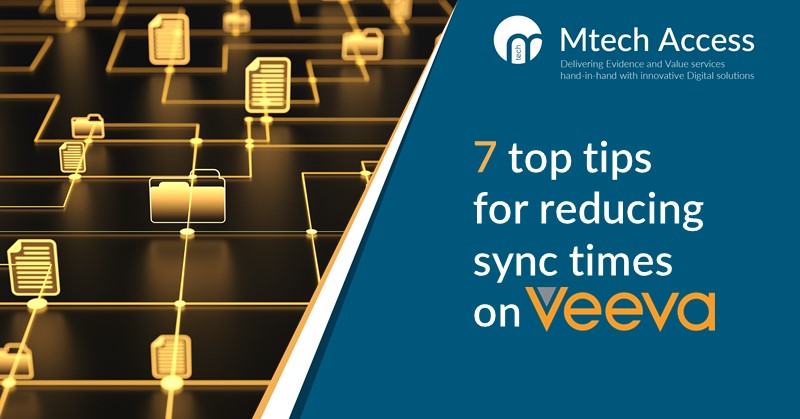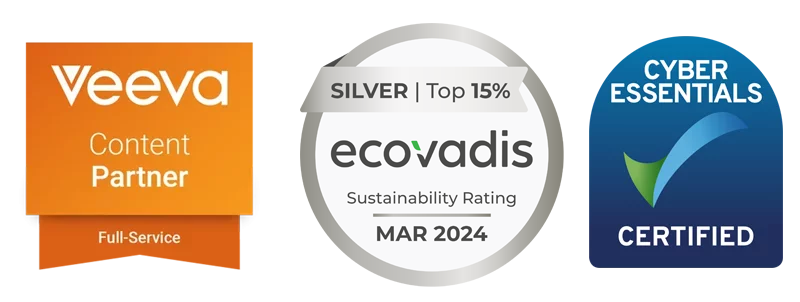
Our expert developers work with our health economists, medical writers and market access consultants to create Veeva‑compatible digital communication tools, including payer toolkits, budget impact models, and other data visualisations. In this post, our developers share some of the tips they use when creating and editing presentations for Veeva, to help reduce sync times – a key consideration for content managers and KAMs alike.
Whenever you make changes to a presentation on Veeva, it then needs to sync locally to enable all your account managers to access the changes. This ‘sync’ can be time consuming; however, there are actions you can take to mitigate this issue. Some of these tips should be implemented by your development team; others can be done via your CRM/Vault administrator.
Our tips can be grouped into two strategies: first, reducing the size of the file or files that need to be sync’d and, second, ensuring only the users who need the content receive it (restricting content):
Minimising file size:
1. Only package the necessities
It sounds obvious, but it’s worth checking that only the files required are packaged within a key message zip. Make sure you have removed any unnecessary working documents and source files as these tend to be larger in file size than their output formats.
2. Use shared resources to centralise reusable assets
Particularly when syncing wide style presentations (presentations containing multiple key messages), it’s best practice to keep each key message zip file size as small as possible.
Centralising assets that occur within each key message is a great way to reduce the size of the zip files associated with a message. This can be achieved by storing all the shared assets within a shared key message. Using shared resources in this way also means that assets, such as logos and files, can be updated centrally and more quickly.
3. Consider deep over wide presentation format with dynamic content
When implementing content that has a similar layout but different content/data, consider implementing a single key message with a dynamic interface.
For example, say you want to implement a chart that displays data for a given population. Implementing static content for each population could result in hundreds of key messages needing to be sync’d. Instead, you could implement a single key message with a dynamic chart which obtains its data based on the user’s selections (e.g. a dropdown menu). This would significantly reduce sync times and deliver a neater solution.
4. Image compression and dimensions
High quality images equate to large file sizes. Compressing images before including them within content will reduce their large file size. However, be mindful that you don’t compress the file to such an extent that image quality is reduced.
Also, rather than resizing images within content without changing the original dimensions, you can greatly reduce the file size by changing the original image dimensions before adding it to your presentation.
Restricting content:
5. Only sync to the audience who needs it by refining your content by product
You can reduce sync times by reducing the amount of content the audience has access to. A great way to do this is via product. In Veeva, each user can be given access to content, based on the products they specialise within. As such, you can ensure that only those with access to the product have access to your content and any future updates. If a user no longer specialises in a certain product, it’s advantageous to dissociate their account from this product as this will reduce the content sync.
6. Implement sharing and device rules
Consider other ways of ensuring that your content is only being pushed to those who need it. You can further reduce sync times by filtering content based on other properties such as a user’s locale/country and device.
One extra tip to add...
7. Consider when you sync
At our Mtech Access HQ in the UK, we generally feel that syncing in the morning is faster than in the afternoon, by a few minutes. This could be down to increased workload/ traffic later in the day where data reside within the Veeva infrastructure, and of course, our own internal networking.

